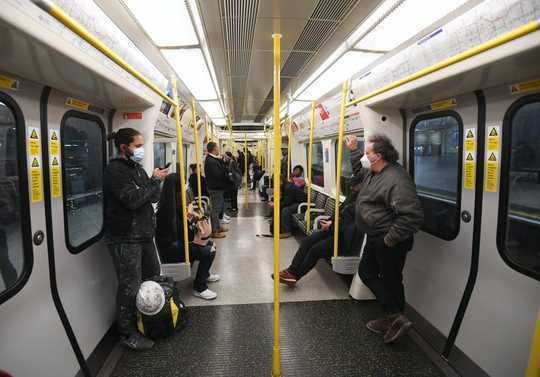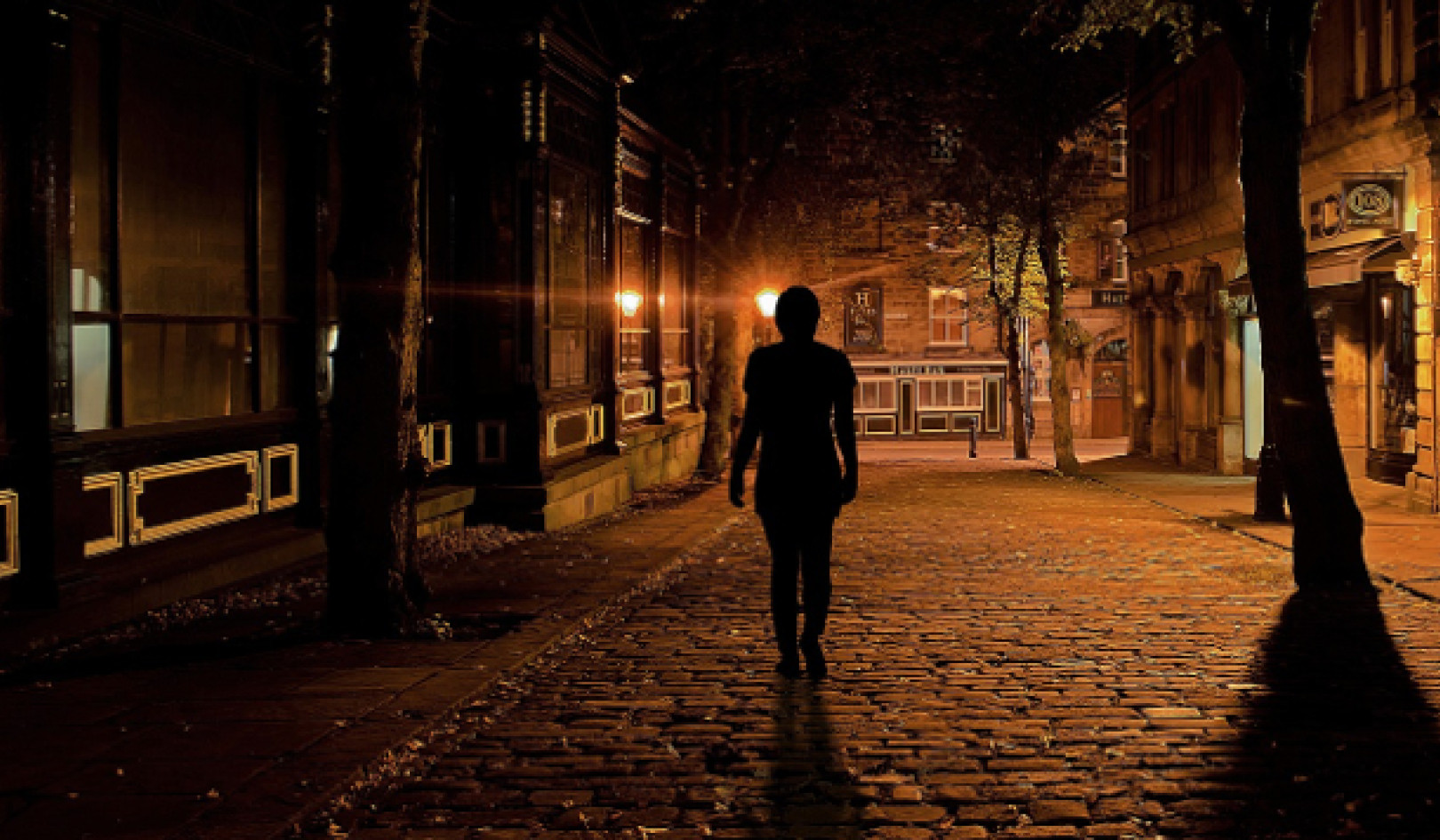 A cyclist rides in The Mall, London, May 10 2020. EPA-EFE/WILL OLIVER
A cyclist rides in The Mall, London, May 10 2020. EPA-EFE/WILL OLIVER
COVID-19 has radically changed our travel habits in just a matter of weeks. Walking and cycling are up, as people enjoy their daily exercise or take essential journeys they might otherwise have made by public transport. Cycle-to-work schemes have seen a 200% increase in the number of bicycle orders, while car use is roughly 40% of what it was in mid-February as more people work from home. Air pollution in cities has duly fallen rapidly, with nitrogen oxide pollution down 70% in Manchester, England.
Transport is the UK’s most polluting sector, so encouraging more people to keep walking and cycling after the pandemic would benefit the environment, as well as make cities healthier for the people who live in them.
The UK government is preparing to keep social distancing intact once public transport networks resume full service by reducing the number of passengers by 90% and staggering work times. But the International Transport Forum predicts there’ll be a sudden rise in car use after the lockdown is eased, with many people opting to avoid potential exposure to the virus on buses and underground trains. So how can we ensure the positive developments in active travel become permanent features of city life?
 Social distancing rules mean only one in ten passengers can board public transport. EPA-EFE/FACUNDO ARRIZABALAGA
Social distancing rules mean only one in ten passengers can board public transport. EPA-EFE/FACUNDO ARRIZABALAGA
How cities are adapting
As people change how they work, study and enjoy free time during the pandemic, city authorities are changing how transport can be accessed. Public transport provision in London has dropped due to record low demand, and the London mayor’s office is developing a plan to enable more people to walk and cycle for essential journeys, by extending footways, restricting driving on shopping streets and adding extra cycle lanes. A £5 million fund has been proposed by the Greater Manchester Combined Authority to carry out the same work here.
Similar schemes are being implemented elsewhere. Paris has created 650km of new cycle ways, including “pop up” options which have widened cycle routes, reducing the space given to cars. In Milan 22 miles of roads, formally used by cars, have been turned into walking and cycling routes. In the Colombian capital, Bogota, officials have made 75 miles of streets free of motorised transport.
These temporary changes could reduce the overall demand for motorised travel well into the future. With cleaner air and stronger social bonds, fewer than one in ten people want life to return to “normal” after the pandemic. Lowering the number of diesel and petrol vehicles, allowing people more space to walk, run and cycle through city streets and designating more green space for residents to enjoy could make urban areas permanently happier.
Barriers to change
To head off this danger of a return to heavier car use, the UK government recently pledged a £250 million emergency fund to create pop-up cycle lanes, widen pavements and create walking and cycling only streets across England. In the long term, Transport Secretary Grant Shapps promised a £2 billion national cycling plan, which includes legal changes to protect road users and at least one “zero emissions city”, where the centre would be for bikes and electric vehicles only.
Research suggests that 58% of car journeys in the UK are shorter than 5km, so walking or cycling could be the main alternative for many city dwellers. That’s how people in Denmark got around while still maintaining social distancing. More Danes are cycling than ever, but a cycling culture had already existed in the country for a long time.
Cultural changes can take a long time to take root. A lasting transformation of city streets will need careful planning and buy-in from the public. The enjoyment that many have taken from quieter streets during their daily exercise could produce a cultural shift towards more active travel and less car use in the UK. But in coming weeks and months, clear guidance from the government on using transport safely and efforts to build the infrastructure for walkers, runners and cyclists will be critical to making it stick. Reshaping cities to allow people more space to walk and cycle will help lay the ground for permanent change.
About The Author
Nick Davies, Research Fellow in Sustainable Cities and Transport, University of Salford; Clare Cornes, PhD Candidate in Sustainable Mobility, University of Salford, and Graeme Sherriff, Research Fellow in Urban Studies, University of Salford
This article is republished from The Conversation under a Creative Commons license. Read the original article.
Related Books
Drawdown: The Most Comprehensive Plan Ever Proposed to Reverse Global Warming
by Paul Hawken and Tom Steyer In the face of widespread fear and apathy, an international coalition of researchers, professionals, and scientists have come together to offer a set of realistic and bold solutions to climate change. One hundred techniques and practices are described here—some are well known; some you may have never heard of. They range from clean energy to educating girls in lower-income countries to land use practices that pull carbon out of the air. The solutions exist, are economically viable, and communities throughout the world are currently enacting them with skill and determination. Available On Amazon
In the face of widespread fear and apathy, an international coalition of researchers, professionals, and scientists have come together to offer a set of realistic and bold solutions to climate change. One hundred techniques and practices are described here—some are well known; some you may have never heard of. They range from clean energy to educating girls in lower-income countries to land use practices that pull carbon out of the air. The solutions exist, are economically viable, and communities throughout the world are currently enacting them with skill and determination. Available On Amazon
Designing Climate Solutions: A Policy Guide for Low-Carbon Energy
by Hal Harvey, Robbie Orvis, Jeffrey Rissman With the effects of climate change already upon us, the need to cut global greenhouse gas emissions is nothing less than urgent. It’s a daunting challenge, but the technologies and strategies to meet it exist today. A small set of energy policies, designed and implemented well, can put us on the path to a low carbon future. Energy systems are large and complex, so energy policy must be focused and cost-effective. One-size-fits-all approaches simply won’t get the job done. Policymakers need a clear, comprehensive resource that outlines the energy policies that will have the biggest impact on our climate future, and describes how to design these policies well. Available On Amazon
With the effects of climate change already upon us, the need to cut global greenhouse gas emissions is nothing less than urgent. It’s a daunting challenge, but the technologies and strategies to meet it exist today. A small set of energy policies, designed and implemented well, can put us on the path to a low carbon future. Energy systems are large and complex, so energy policy must be focused and cost-effective. One-size-fits-all approaches simply won’t get the job done. Policymakers need a clear, comprehensive resource that outlines the energy policies that will have the biggest impact on our climate future, and describes how to design these policies well. Available On Amazon
This Changes Everything: Capitalism vs. The Climate
by Naomi Klein In This Changes Everything Naomi Klein argues that climate change isn’t just another issue to be neatly filed between taxes and health care. It’s an alarm that calls us to fix an economic system that is already failing us in many ways. Klein meticulously builds the case for how massively reducing our greenhouse emissions is our best chance to simultaneously reduce gaping inequalities, re-imagine our broken democracies, and rebuild our gutted local economies. She exposes the ideological desperation of the climate-change deniers, the messianic delusions of the would-be geoengineers, and the tragic defeatism of too many mainstream green initiatives. And she demonstrates precisely why the market has not—and cannot—fix the climate crisis but will instead make things worse, with ever more extreme and ecologically damaging extraction methods, accompanied by rampant disaster capitalism. Available On Amazon
In This Changes Everything Naomi Klein argues that climate change isn’t just another issue to be neatly filed between taxes and health care. It’s an alarm that calls us to fix an economic system that is already failing us in many ways. Klein meticulously builds the case for how massively reducing our greenhouse emissions is our best chance to simultaneously reduce gaping inequalities, re-imagine our broken democracies, and rebuild our gutted local economies. She exposes the ideological desperation of the climate-change deniers, the messianic delusions of the would-be geoengineers, and the tragic defeatism of too many mainstream green initiatives. And she demonstrates precisely why the market has not—and cannot—fix the climate crisis but will instead make things worse, with ever more extreme and ecologically damaging extraction methods, accompanied by rampant disaster capitalism. Available On Amazon
From The Publisher:
Purchases on Amazon go to defray the cost of bringing you InnerSelf.comelf.com, MightyNatural.com, and ClimateImpactNews.com at no cost and without advertisers that track your browsing habits. Even if you click on a link but don't buy these selected products, anything else you buy in that same visit on Amazon pays us a small commission. There is no additional cost to you, so please contribute to the effort. You can also use this link to use to Amazon at any time so you can help support our efforts.

























